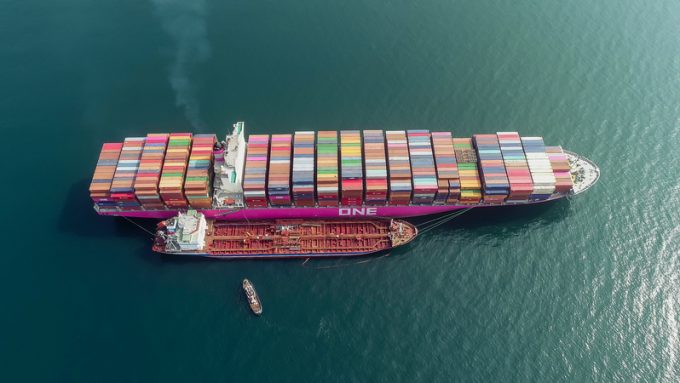NOCC adds third ‘ammonia-ready’ PCTC newbuild orderbook
Norwegian Car Carriers (NOCC) has added a third ‘ammonia-ready’ 7,000ceu LNG-powered ship to its two-vessel, ...
TFII: SOLID AS USUALMAERSK: WEAKENINGF: FALLING OFF A CLIFFAAPL: 'BOTTLENECK IN MAINLAND CHINA'AAPL: CHINA TRENDSDHL: GROWTH CAPEXR: ANOTHER SOLID DELIVERYMFT: HERE COMES THE FALLDSV: LOOK AT SCHENKER PERFORMANCEUPS: A WAVE OF DOWNGRADES DSV: BARGAIN BINKNX: EARNINGS OUTODFL: RISING AND FALLING AND THEN RISING
TFII: SOLID AS USUALMAERSK: WEAKENINGF: FALLING OFF A CLIFFAAPL: 'BOTTLENECK IN MAINLAND CHINA'AAPL: CHINA TRENDSDHL: GROWTH CAPEXR: ANOTHER SOLID DELIVERYMFT: HERE COMES THE FALLDSV: LOOK AT SCHENKER PERFORMANCEUPS: A WAVE OF DOWNGRADES DSV: BARGAIN BINKNX: EARNINGS OUTODFL: RISING AND FALLING AND THEN RISING

As global freight rates continue to fall, container shipping lines are being hit by a huge spike in fuel costs.
This will inflict further damage on the bottom line of the financials of weaker carriers already challenged by second-quarter losses.
According to Ship & Bunker data, the price of Rotterdam-sourced industry-standard low-sulphur fuel (VLSFO) jumped on Friday by another $8 per ton to $643 and has now increased by 22% since the end of June.
In theory carriers have fuel cost mechanisms in place to adjust bunker surcharge amounts payable by shippers, but in practice some lines have waived increases within the heavily discounted period of the past few weeks.
Meanwhile, oil prices have surged again this morning, touching $90 a barrel with December Brent Crude now priced at around $95.
The main driver is OPEC’s supply cuts which the oil producing nations have extended to the end of the year.
Indeed, analysts are forecasting a global deficit of 2m barrels a day in Q4 due to the extended cuts by OPEC+ (including Russia).
This will ensure that bunker prices continue to head north for the foreseeable future at a time when carriers need to keep a lid on costs, if not reduce voyage expenses, to mitigate collapsing revenues.
Moreover, the spread between HFO (heavy fuel oil) and VLSFO has now shrunk to less than $30 per ton, rendering the use of scrubbers that facilitate the burning of HFO by ships now a marginal gain, especially when the use of scrubber technology is restricted in certain regions.
Nevertheless, the previous sky-high prices for LNG, that for a period had some newbuild LNG-powered container vessels using VLSFO as a cheaper alternative fuel, are no longer, with Ship & Bunker recording a price of $728 per ton as at last Friday’s trading in Rotterdam.
Furthermore, LNG’s energy cost per ton is said to be about 16% lower than VLSFO when its energy efficiency is factored in, meaning that the fuels are currently more or less on a par on price.
Notwithstanding the current challenges as a consequence of the spike in fuel prices, carriers are now preparing to meet the requirements of the EU’s Emissions Trading System (ETS) regulations which come into effect from 1 January 2024.
As of next year, the ETS will be extended to all shipping within the European Economic Area (EEA) requiring ship operators to monitor and report their emissions and pay a contribution for every ton of CO2 emitted by their vessels.
The complex application of the EU’s ETS regulations are comprehensively covered by this Maersk advisory (15 September).
Maersk warns that the “cost of compliance is expected to be significant and will keep increasing with the phased implementation”.
It lists out estimates for Q1 2024 emissions surcharges in Euros per FFE, which for instance from Asia to North Europe are €70 for a standard 40 ft container and €105 for a 40 ft reefer.
Similar to its bunker surcharge mechanism, Maersk said that the emission surcharge would be updated on a quarterly basis.
Comment on this article